Harnessing human movement
By Alex Branch
Like an actress on a science fiction movie set, Karen Esser prepares for her role surrounded by laboratory technicians attaching small bulb-like fixtures to her black Spandex suit.
Within minutes, 54 bulbs – known as reflective markers – cover her body. Esser is led to a treadmill in front of a 180-degree virtual reality screen. Red lasers shine at her feet as her shoulder harness is connected to three ceiling-mounted cables.
She is surrounded by 12 motion-capture cameras that measure her movements with accuracy down to the hundredths of a millimeter and transmit those measurements to a computer for analysis.
The 67-year-old Plano woman asks a lab technician to take her photo.
“My grandsons are going to get a kick out this,” Esser said.
Esser isn’t making a movie. She’s participating in one of many cutting-edge research projects underway in the Human Movement Performance Laboratory, an innovative and collaborative workspace at UNT Health Science Center.
It is here that interdisciplinary teams of researchers pursue novel treatments for people with balance and function problems caused by illness, disabling injuries or age- and developmental-related issues.
Esser, who was diagnosed with Parkinson’s disease in 2014, is taking part in an experiment led by Evan Papa, DPT, PhD, and Rita M. Patterson, PhD. Dr. Papa and Dr. Patterson study why Parkinson’s disease makes people more likely to suffer falls and are trying to identify new ways to prevent them.
But their ultimate goal is the same that all researchers in the Human Movement Performance Laboratory have for the individuals – amputees, children and adults with autism, stroke victims, older adults, people with diabetes – who pass through the lab doors.
Through the study of movement, they want to give them a better quality of life.
Research teamwork
The laboratory feels like the set of a James Cameron movie for good reason. It relies on the same motion capture system that the director used to make the 2009 epic science fiction film Avatar.
Dr. Patterson and Nicoleta Bugnariu, PT, PhD, helped lead acquisition of technology in the laboratory after it opened in spring 2008 thanks to a gift from the Osteopathic Heritage Foundation.
Today, the lab features virtual reality, motion capture, eye tracking, muscle activation, time series data analysis, biomechanics, exercise equipment and mathematical modeling technologies that attract research partners from inside and outside the Health Science Center. Collaborations are underway with Cook Children’s Medical Center, Child Study Center, Fort Worth Museum of Science and History, UT Southwestern Medical Center, University of Texas at Arlington, the University of Louisville and others.
“The laboratory emphasizes team-based research,” said Dr. Patterson, Director of Research for Osteopathic Manipulative Medicine. “You’ll find engineers, neuroscientists, physical therapists, kinesiologists and experimental psychologists coming together to solve complex problems.”
Their experiment combines physical therapy, engineering and osteopathic medicine. Esser, who was diagnosed with Parkinson’s disease in 2014, walked and stood while the treadmill simulated a trip or a backward slip. The cameras monitored how she regained her balance.
Afterward, David Mason, DO, performed osteopathic manipulative medicine – a hands-on therapy that adjusts muscles and joints – on Esser before she returned to the treadmill to perform the same exercises to see if the treatment improved her body’s response.
“It’s a fascinating experience,” Esser said. “I’m willing to do anything I can to help them find ways to help people with Parkinson’s or any other diseases.”
Across the lifespan
There are laboratories similar to the Human Movement Performance Lab across the country, but the Health Science Center is unique because of the broad range of people researchers study.
“We work with people across their lifespans – from children to the elderly,” said Dr. Bugnariu, Interim Dean, School of Health Professions. “Our goal is to help people live active, independent lives.”
Haylie Miller, PhD, a developmental psychologist and Assistant Professor of Physical Therapy, studies why adults and children on the autism spectrum have trouble responding to their environments. Participants wear glasses embedded with eye-tracking cameras, and they dodge virtual balls rolling toward them.
Their body and eye movements are studied to help determine whether participants struggle in their environments because of how they interpret what they see, how they control their bodies, or a combination of factors.
The controlled environment of the laboratory is critical to discovering the answer.
“Even if you can move to look at a person or object, if you can’t focus on it long enough to get the correct information or if you are focused on the wrong part, you will not be able to respond effectively,” Dr. Miller said. “In the lab, we can see what circumstances cause people to struggle so that we can find ways to help them succeed.”
New devices
Ideas explored in the laboratory result in innovative new devices.
Metin Yavuz, Assistant Professor of Physical Therapy, has put his doctorate in engineering to use developing devices that protect people with diabetes from developing skin ulcers, an ailment that effects 12 percent to 25 percent of diabetics and causes 100,000 amputations annually.
Dr. Yavuz and his research team have developed working prototypes of a shoe and a wheelchair with cooling systems designed to help prevent ulcers by controlling skin temperature. By controlling temperatures, the tissue should suffer less damage.
“If we can find a way to reduce these ulcers, we can help reduce a major health problem and improve the quality of life for people with diabetes,” Dr. Yavuz said.
Dr. Yavuz received three grants worth about $900,000 from the National Institute of Diabetes and Digestive and Kidney Diseases to further his research, which has earned awards from the American Diabetes Association, the American Society of Biomechanics and the Cleveland Clinic, and has been published in Diabetes Care.
The potential impact of his work is clear to people with diabetes like Rudolph Blancarte, who participated in Dr. Yavuz’s foot ulcer study in the Human Movement Performance Laboratory.
Blancarte has experienced at least two foot ulcers.
“The first time it happened, my foot swelled like a balloon and I couldn’t walk,” said Blancarte, 56, of Fort Worth. “The second time, it turned into an abscess. It’s pretty miserable.”
Making lives better
Next, improvements are coming to the laboratory. A $65,000 grant from the Health Science Center will fund six new cameras and software that records at a faster speed and with higher resolution.
The upgrades will allow researchers to get more precise detail to measure hand motion on projects such as a soft robotic glove that assists stroke victims and children with cerebral palsy during rehabilitation. The robotic glove is a project that HSC scientists developed with researchers at the UT-Arlington Research Institute, work currently funded by the National Science Foundation.
No matter how the laboratory changes, scientists there will continue to ask themselves the same question when considering a research idea to pursue, Dr. Patterson said.
“Can this make someone’s life better?”
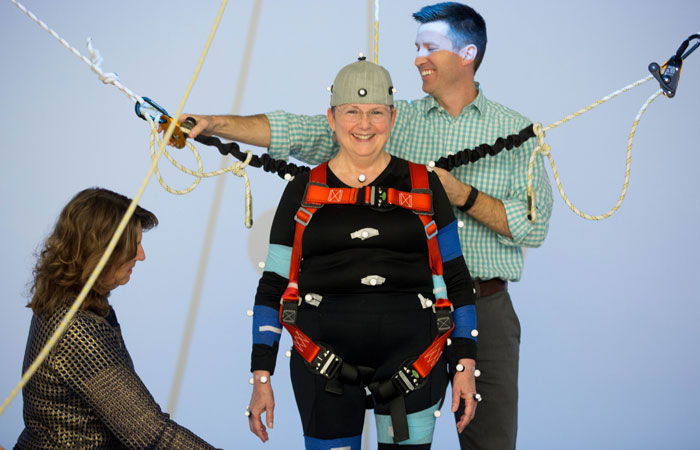
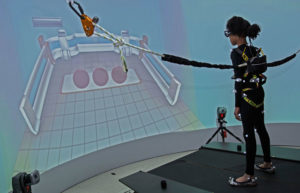
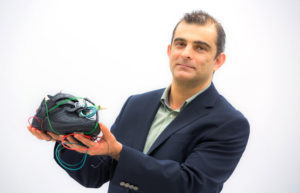
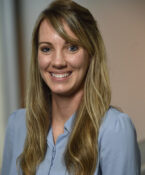
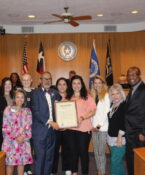
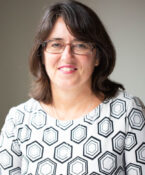
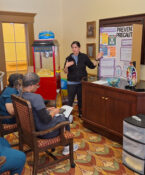

Social media